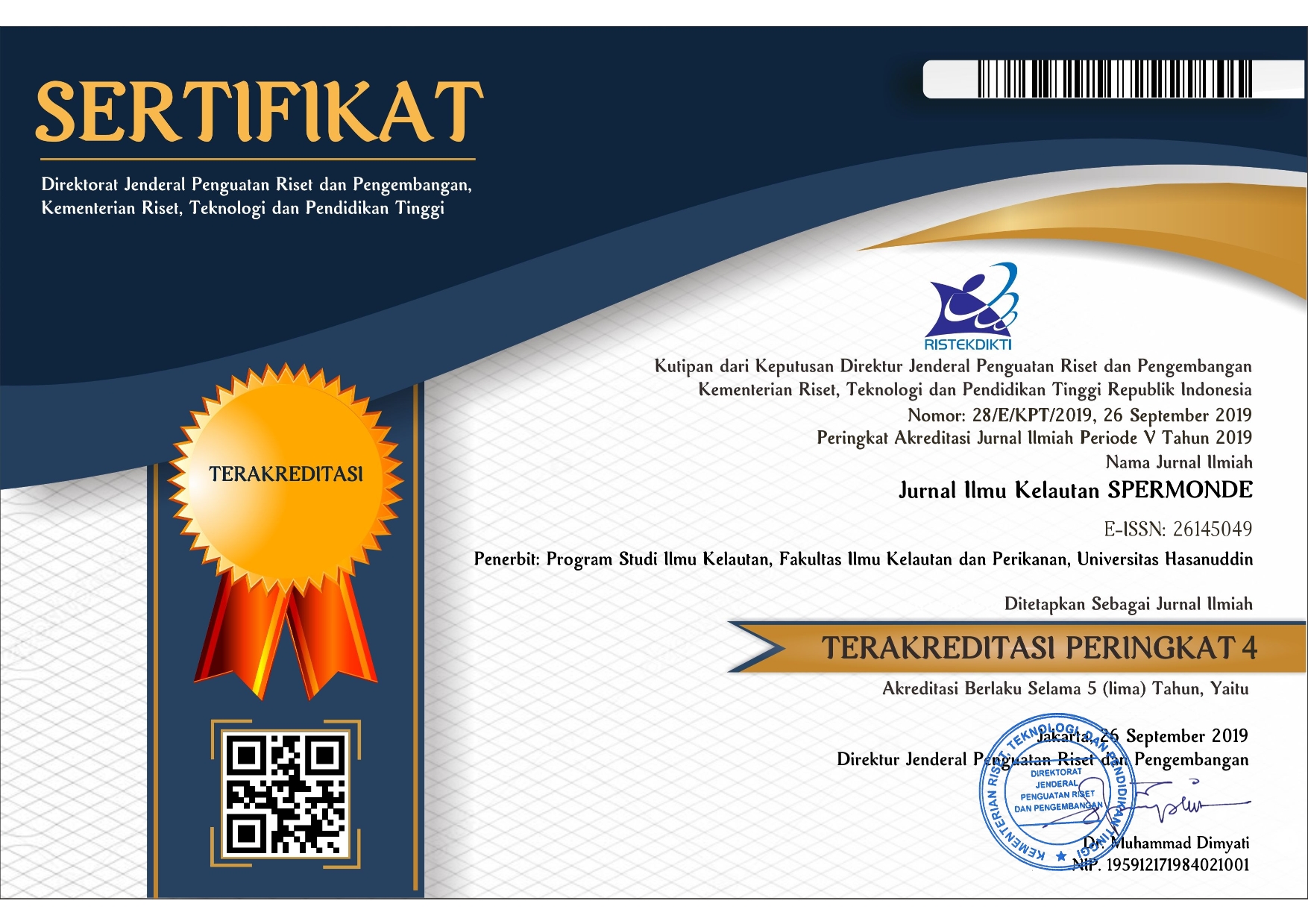PRELIMINARY OBSERVATIONS OF THE DEVELOPMENT OF GONAD PIGMENTATION AS A REPRODUCTIVE PATTERNS OF FAVIIDAE IN SPERMONDE ARCHIPHELAGO, INDONESIA
DOI:
https://doi.org/10.20956/jiks.v9i1.19956Keywords:
Faviidae, Gonad Pigmentation, Spermonde.Abstract
Coral spawning occurs throughout the year in Indonesia due to tropical climate conditions that influence coral development and spawning. As representative data on coral gonad development in the Spermonde Archipelago, observations on the development of the Faviidae gonads were conducted on Barrang Lompo, Kodingareng Keke, Samalona, and Bonetambung Island. Environmental elements are measured in the form of surface water temperature and rainfall. Based on the abundance of this type of gigantic coral at the study site, coral tissue sampling was concentrated on the Faviidae. The pigmentation of the gonads of Faviidae has been studied visually in nature. The samples were carved on the coral before being photographed. To make it easier to detect the level of pigmentation in each species, coral gonadal tissue was imaged. If there is an orange, yellow, or blue tint, it indicates that the coral has colored gonads and is mature gonads, indicating that coral spawning will occur soon. A water lever logger was used to measure the temperature of the water. The results of water temperature measurements vary and can be linked to the development of coral pigmentation as well as observations from November to March when the third phase (pigmented) process in Faviidae was considered to have happened in large numbers. It is possible that Faviidae can breed during this sensitive period. Rainfall data was gathered from Makassar City's Paotere Maritime Meteorological Station.Downloads
Download data is not yet available.
Downloads
Published
2023-05-01
Issue
Section
Articles
License

This work is licensed under a Creative Commons Attribution-NonCommercial 4.0 International License.

This work is licensed under a Creative Commons Attribution 4.0 International License










